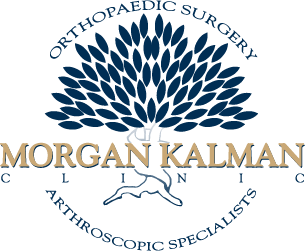The Morgan Kalman Clinic provides regenerative therapies: PRP (platelet rich plasma) and Stem Cells (via bone marrow concentrate) to treat a variety of orthopedic/sports medicine conditions. Regenerative therapies offer an alternative to treatment of injuries and in some cases surgery. Some people have conditions that do not respond to standard treatment.
PRP and Stem Cells are gaining increased popularity in the sports medicine field nationally especially because it is more of a “natural” therapy by harnessing the power of your body’s own cells and platelets. The procedure is performed in the office setting with minimal risk, downtime and minimal pain.
If you have tried and failed physical therapy, cortisone injections, medication, or even surgery, PRP and Stem Cells may be just the right option for you. The same therapy used by athletes is available for everyone for treatment of acute and chronic tendon, ligament and muscle injuries.
Common Conditions Treated
• Partial Tendon Tears: Rotator Cuff, Achilles Tendon, Plantar Fasciitis
• Partial Ligament Injuries
• Overuse Tendon Injuries: “Tennis Elbow” “Golfers Elbow” “Jumper’s Knee”
• Hip, Knee and Shoulder Osteoarthritis
Some recent studies have shown PRP to be more effective than hyaluronic acid injections for osteoarthritis of the knee. Studies also support use of stem cells.
Sprains involve damage to ligaments, whereas strains are muscle or tendon injuries. While acute injuries generally are treated with rest, ice, and anti-inflammatory medications, chronic problems may not respond.
Regenerative therapy is a game-changing area of medicine with the potential to heal damaged tissues that are the result of injury, overuse or wear and tear over time. Stem cells have regenerative power; when they are injected into an area that needs healing, your body’s natural response is to accelerate the process and repair the damage. This is a non-surgical procedure involving the extraction and injection of your own naturally occurring stem cells.
PRP involves a blood draw in the office, like getting a standard blood test. The blood is then spun down in a special centrifuge, which highly concentrates the platelets in the blood. The resulting platelet concentrate is then injected directly into the damaged portion of the ligament or tendon under ultrasound guidance. Stem Cells via bone marrow concentrate involves extraction of cells from the back of the pelvis. Both, of course are under sterile conditions. The injured area and overlying skin first are anesthetized with a local anesthetic to reduce any discomfort from the injection. There is a period of several days of soreness after the treatment. Patients are discouraged from taking anti-inflammatory medications, such as Motrin or Aleve, since these can hinder the healing process. Tylenol is allowed during this time.
PRP injections are given approximately once every 6 weeks, and usually one to three treatments are required. Stem cells (via bone marrow) are generally one treatment annually. The actual injection takes only a few minutes. But the entire process, from drawing the blood or bone marrow, to spinning it down in the centrifuge, and then injecting it, can 30 minutes to an hour depending on the type treatment and area treated.
The risks from treatment are very rare and are related to the injection itself, not the solution injected. They can include localized infection, bleeding or bruising or, very rarely, temporary nerve damage.
The future of treating orthopedic and sports medicine injuries is now and includes the use of “Orthobiologics” such as PRP (platelet rich plasma) and Stem Cells.
The treatment may not be covered by insurance plans.
References are on file.
Please schedule a consultation to find out what treatment is best for you.
We look forward to seeing you soon.

 More and more children are overweight, to the point of obesity. According to a report from the Gatorade Sports Science Institute, there has been a dramatic increase in juvenile obesity over the last 15 years, not only in the U.S., Canada, and western Europe, but also in Latin America southeast Asia, and Africa, where children traditionally suffered from undernutrition.
More and more children are overweight, to the point of obesity. According to a report from the Gatorade Sports Science Institute, there has been a dramatic increase in juvenile obesity over the last 15 years, not only in the U.S., Canada, and western Europe, but also in Latin America southeast Asia, and Africa, where children traditionally suffered from undernutrition. Activities must be fun
Activities must be fun